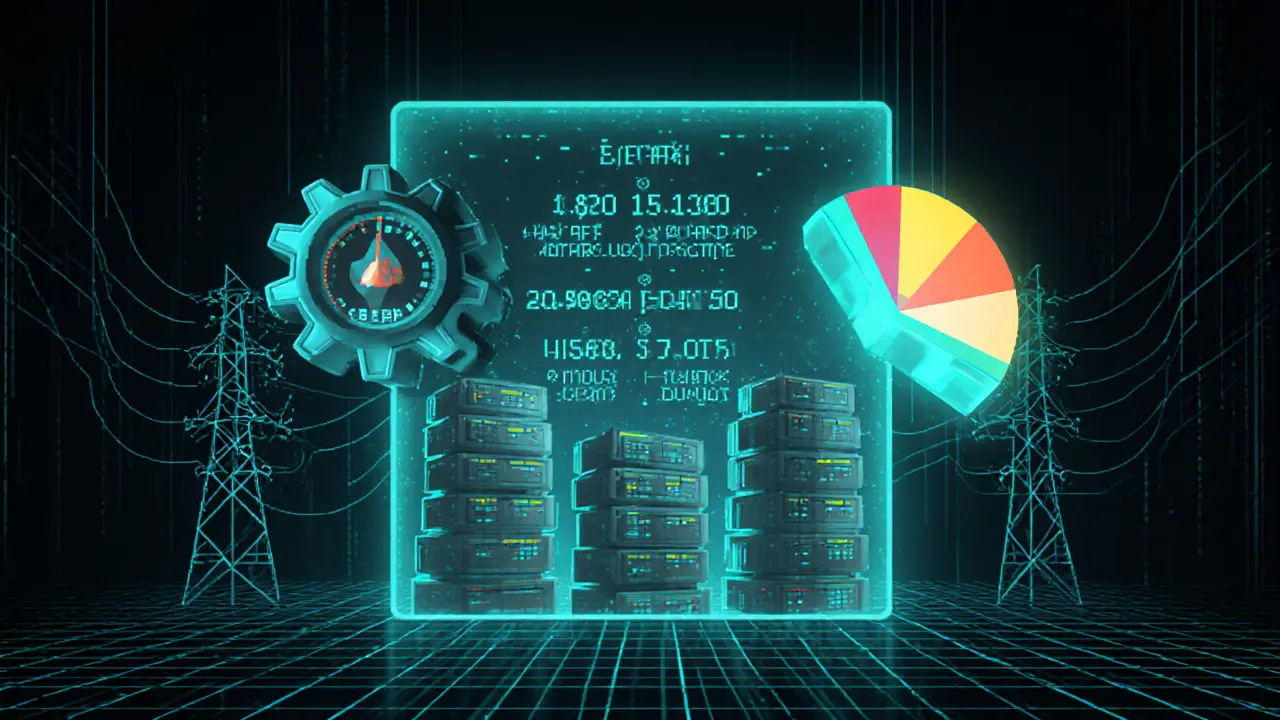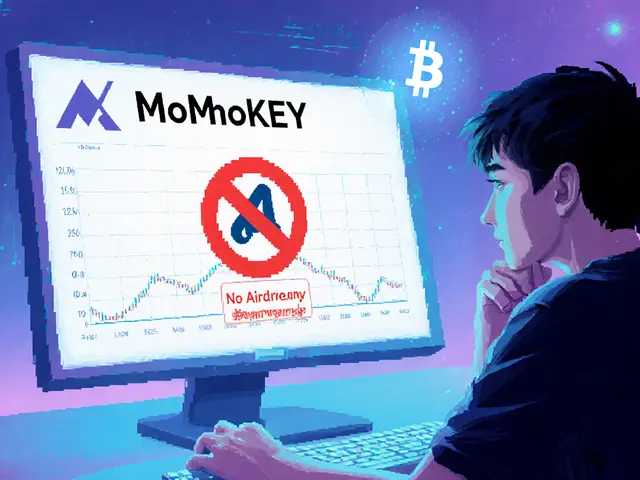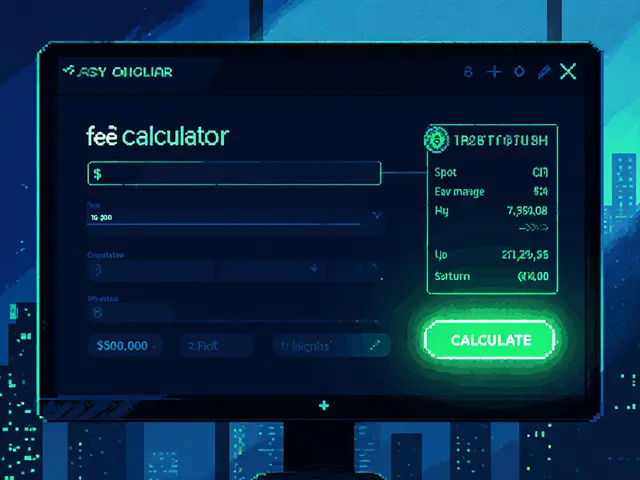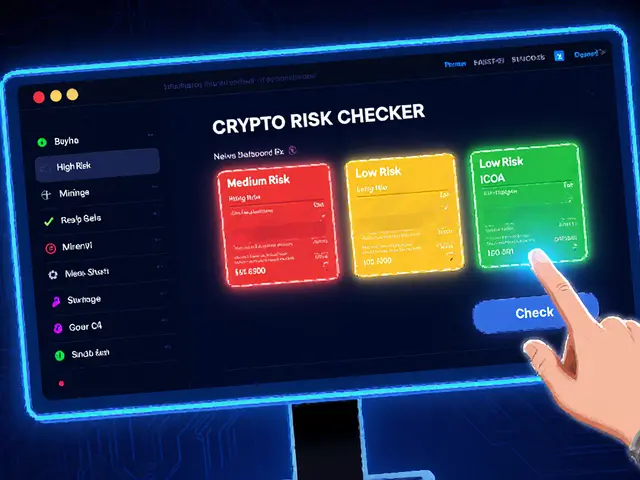Hash Rate Security Calculator
Estimated 51% Attack Cost
$0.00
Estimated cost to acquire majority hash rate
Security Level
Very High
Based on current hash rate
Security Insight
Higher hash rate makes 51% attacks exponentially more difficult and expensive. This calculator estimates the cost to acquire enough computational power to control the network.
TL;DR
- Hash rate measures the total computational power protecting a proof‑of‑work blockchain.
- Higher hash rates make 51% attacks exponentially harder and signal network health.
- Monitoring hash rate trends helps miners, investors, and developers gauge security and price outlook.
- Compare hash rate with proof‑of‑stake security metrics to understand trade‑offs.
- Use real‑time tools like Blockchain.com and watch difficulty adjustments for accurate analysis.
What Is hash rate the aggregate number of hash calculations performed each second by all miners in a blockchain network?
In a proof‑of‑work (PoW) system, miners race to solve a cryptographic puzzle. Every guess they make is a hash calculation. The sum of all these guesses across the globe per second is what we call hash rate. Think of it as the network’s muscle: the more muscle, the harder it is to break.
How Hash rate Reflects Network Security
Security in PoW blockchains rests on economics and math. An attacker needs to control more than half of the total computational power to rewrite history - the infamous 51% attack. The cost of acquiring that power grows linearly with hash rate, but the security gain grows exponentially. For example, a network at 100EH/s would require a miner to amass over 50EH/s, translating to billions of dollars in ASIC hardware and massive electricity bills.
Because hash rate is directly tied to the amount of hardware deployed, a rising hash rate usually means more participants, broader geographic distribution, and less centralisation risk. Conversely, a sharp decline can signal miner exodus, possibly due to unprofitability or regulatory pressure, raising red flags for security and decentralisation.
Measuring and Interpreting mining difficulty the numerical target that miners must meet to add a block, adjusted roughly every 2,016 blocks
Mining difficulty is the network’s way of keeping block times steady. When hash rate climbs, difficulty rises to keep the average block interval at its target (10 minutes for Bitcoin). The formula links the two variables:
- Observe the average time it took to find the last 2,016 blocks.
- Calculate the ratio of the target block time (10minutes) to the observed time.
- Multiply the previous difficulty by that ratio to get the new difficulty.
Because difficulty reacts to hash rate, a sudden spike in difficulty often confirms a genuine hash‑rate increase rather than a short‑term statistical blip.

Why Hash Rate Beats Other Security Metrics in PoW
Proof‑of‑stake (PoS) networks rely on stake‑weight, validator count, and slashing conditions. Those metrics matter, but they don’t directly measure computational resistance. In a PoW chain, hash rate is a single, quantifiable number that captures both decentralisation and economic cost.
Below is a quick side‑by‑side look at the two approaches.
| Aspect | Proof of Work | Proof of Stake |
|---|---|---|
| Primary metric | Hash rate (H/s) | Staked token amount |
| Attack cost | Hardware + electricity | Capital locked in stake |
| Decentralisation signal | Geographic spread of miners | Number of validators |
| Adjustment frequency | Every 2,016 blocks | Every epoch (varies) |
| Energy consumption | High (depends on hardware) | Low |
Both models have merits, but when you need a hard, observable number that directly ties to the effort required for a 51% attack, hash rate wins.
Real‑World Implications of Hash Rate Changes
Miners on forums consistently report that a rising hash rate boosts confidence in block rewards because it signals a healthy network. Mining pools, such as mining pool a collective of miners who share computational power and rewards, adjust their payout models based on difficulty, which in turn follows hash‑rate trends.
Traders watch hash‑rate charts on platforms like Blockchain.com a blockchain analytics site offering real‑time hash‑rate and difficulty data. A sustained upward trend often precedes price rallies, as higher network security attracts institutional investors. Conversely, a prolonged dip can foreshadow price corrections.
Hardware manufacturers track global hash‑rate growth to forecast demand for new ASIC (Application‑Specific Integrated Circuit) miners. A surge indicates that fresh capital is flowing into the sector, prompting firms to ramp up production.
Monitoring Hash Rate: Tools and Best Practices
To stay ahead, set up a simple monitoring routine:
- Use real‑time dashboards: Blockchain.com, CoinWarz, and BitInfoCharts provide live hash‑rate graphs.
- Record difficulty adjustments every 2,016 blocks to correlate changes.
- Watch for anomalies: a sudden 10% drop within a day may signal a major miner shutdown.
- Combine hash‑rate data with energy‑price trends; rising electricity costs can drive miners off‑grid, affecting the metric.
- Consider geographic distribution reports, now emerging from AI‑enhanced analytics, to gauge decentralisation health.
Remember: short‑term spikes are normal. Focus on sustained trends over weeks or months.
Future Trends: From Simple Numbers to Holistic Security Scores
Analysts predict that hash‑rate monitoring will evolve beyond raw H/s values. Upcoming platforms plan to layer additional data - such as the mix of renewable vs fossil‑fuel energy, miner location clustering, and hardware efficiency - into a composite security score. Machine‑learning models are already being trained on historical hash‑rate and price data to forecast market moves.
Environmental concerns are pushing the industry toward greener ASIC designs. As regulations tighten, the energy source breakdown will become a key part of the security narrative: a network with high hash rate but powered by coal may face reputational risk, while one powered by renewables could gain a competitive edge.
Frequently Asked Questions
What does a higher hash rate mean for Bitcoin security?
A higher hash rate means more computational power is defending the network. It raises the cost of a 51% attack, makes block production more stable, and typically signals broader miner participation, all of which improve security.
Can a drop in hash rate indicate an imminent 51% attack?
A sudden, steep decline can expose the network to attack because the remaining power needed for a 51% takeover shrinks. However, attackers still need to acquire the missing hardware, so a drop is a warning sign, not an automatic breach.
How often does mining difficulty adjust?
Difficulty recalibrates every 2,016 blocks, roughly every two weeks for Bitcoin, to keep the average block time at its target regardless of hash‑rate fluctuations.
Is hash rate the only metric I should watch for PoW security?
Hash rate is the primary indicator, but complement it with miner distribution data, energy‑source mix, and difficulty trends to get a full picture of decentralisation and resilience.
How do PoS networks measure security compared to PoW?
Proof‑of‑stake relies on the amount of cryptocurrency locked up as stake, validator count, and slashing penalties. While effective, these metrics are economic rather than computational, so they don’t provide a direct analogue to hash rate’s physical resistance.







katie sears
November 4, 2024 AT 01:41Monitoring the hash‑rate is akin to keeping a pulse on the network’s health. A rising hash‑rate usually signals a diversified miner base and thus a lower risk of centralisation. Conversely, a sudden dip can hint at miner capitulation, potentially exposing the chain to vulnerabilities. Keeping an eye on this metric alongside difficulty and energy‑source data gives a holistic view of security.
Gaurav Joshi
November 9, 2024 AT 10:15If you think hash rate is the only thing that matters you are missing the bigger picture it’s about economics and incentive structures
Kathryn Moore
November 14, 2024 AT 18:49Hash rate quantifies total computational power and correlates directly with the cost of a 51% attack. Higher H/s means more ASICs must be purchased and more electricity consumed. Difficulty adjustments keep block times stable, which indirectly reflects hash‑rate trends. Therefore, tracking both metrics provides a clearer security snapshot
Christine Wray
November 20, 2024 AT 03:24While the numbers speak loudly, it’s also vital to interpret them in context. A steady upward trend often aligns with broader miner participation across regions. If the increase is driven by a single large pool, decentralisation concerns may still linger. Balancing raw hash‑rate data with geographic distribution offers a more nuanced view
roshan nair
November 25, 2024 AT 11:58Let’s dive deep – the hash‑rate isn’t just a static figure, it’s a living barometer of miner sentiment. When prices surge, you’ll see a wave of new ASIC orders, pushing the rate upward like a turbo‑charged engine. Conversely, a dip in electricity costs can make mining viable in places that were previously marginal, injecting fresh hash‑power into the network. Keep an eye on regional regulatory news; a sudden ban can yank a chunk of the network offline in minutes, causing a sharp dip that may look alarming but is often temporary. So, blend the raw numbers with market and policy signals for a true security read‑out.
Jay K
November 30, 2024 AT 20:32I appreciate the thorough breakdown of how hash‑rate informs security. The emphasis on both hardware costs and energy consumption resonates with the economic reality miners face.
Kimberly M
December 6, 2024 AT 05:07Great insights! 🌟 Monitoring hash‑rate really does feel like watching a heartbeat, and those emojis capture the excitement. 👍
Navneet kaur
December 11, 2024 AT 13:41Your post ignore the real issues.
Marketta Hawkins
December 16, 2024 AT 22:15Wow, another glorified spreadsheet. So you think a few numbers can replace real security analysis? 🙄
Drizzy Drake
December 22, 2024 AT 06:49I’ve been mining for over a decade and I can tell you that hash‑rate truly is the backbone of any proof‑of‑work chain.
When you look at the raw H/s numbers you’re seeing the collective muscle of thousands of machines spread across continents.
That sheer amount of computational power forces any would‑be attacker to invest billions not just in ASICs but also in massive ongoing electricity bills.
The economics become so unfavorable that even sovereign‑level actors think twice before even considering a 51 % takeover.
Moreover, hash‑rate isn’t static; it ebbs and flows with market sentiment, price spikes, and regulatory changes.
A sudden surge often follows a bullish price rally, as miners scramble to secure more hardware before costs rise.
Conversely, a sharp drop can signal a mining exodus caused by higher electricity rates or unfavorable legislation.
In those moments, you’ll also notice a corresponding dip in difficulty, which can temporarily lower the barrier for new entrants.
That feedback loop of price, hash‑rate, and difficulty creates a self‑correcting system that protects the network’s integrity.
Watching this triad in real time gives investors a predictive edge, as sustained hash‑rate growth usually precedes price appreciation.
It also helps developers gauge when to adjust block parameters or propose upgrades to maintain optimal security margins.
From a security auditing perspective, high hash‑rate coupled with diverse geographic distribution dramatically reduces centralisation risk.
Even if a single giant pool holds a large chunk of the hashrate, the overall network remains resilient because other miners can quickly fill the vacuum.
That’s why many analysts recommend pairing hash‑rate data with miner‑distribution maps for a more holistic assessment.
Finally, as the industry moves toward greener energy sources, the environmental impact of a high hash‑rate becomes less concerning, further strengthening the network’s long‑term viability.
In short, if you want a single, reliable indicator of blockchain security, keep your eyes glued to the hash‑rate chart and interpret it alongside market and policy signals.
AJAY KUMAR
December 27, 2024 AT 15:24The hash‑rate beast roars louder than any government decree!
bob newman
January 1, 2025 AT 23:58Oh sure, because we all know the secret cabal controlling ASIC production is just waiting to hand over billions of dollars to any random miner. 🙃
Anil Paudyal
January 7, 2025 AT 08:32Exact, the cost side is often overlooked but crucial.
Kimberly Gilliam
January 12, 2025 AT 17:07Another endless lecture on numbers, yawn.
Jeannie Conforti
January 18, 2025 AT 01:41I get the feeling the post could be more engaging if we add some real‑world examples, just sayin’.